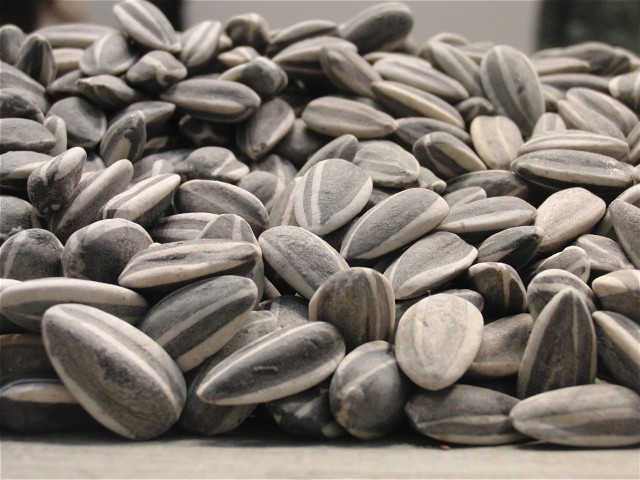Mary Boone Gallery
541 West 24th St. between Tenth & Eleventh Aves.
Tuesday – Saturday through February 4, free
212-752-2929
www.maryboonegallery.com
www.aiweiwei.com
sunflower seeds slideshow
In October 2010, Chinese artist and activist Ai Weiwei installed 100 million porcelain sunflower seeds in the Tate Modern’s Turbine Hall. The individual husks were made by hand by 1,600 workers over a period of two and a half years in Jingdezhen, long famous for its porcelain production, dating back to the Song Dynasty (960-1279). Three million of the hand-painted seeds are now on view at Mary Boone in Chelsea, where they form a rather neat rectangular field in the middle of the spacious gallery. You can walk around the field and take pictures, but if you get too close, a security guard will warn you to back off. When the work opened at the Tate, visitors were encouraged to actually walk and lie on the seeds, stepping right on and crunching the seemingly endless black-and-white pieces, but that interaction created a dust that was determined to be a health hazard, so from then on visitors could only look and not touch. “Sunflower Seeds” is loaded with references, from the historical and political to the economic and the governmental; in fact, near the end of its run at the Tate, Ai was arrested and disappeared for nearly three months. Approaching the piece now, it is difficult not to imagine Ai himself lost in it, his disappearance, which led to outcry from human rights and arts organizations around the world, like a needle in the haystack of the Chinese people. The installation raises questions of mass production and exploitive labor, the Cultural Revolution (Mao badges often included yellow sunflowers), cheap “Made in China” global exports, world hunger, the lack of individuality in an overpopulated Communist Chinese society, and the value of art itself. (Last February, a 100-kilogram collection of the seeds sold for more than half a million dollars at Sotheby’s.) Even the dust-up at the Tate, though not intentional, calls to mind the numerous health hazards that have recently arisen in Chinese food products. Ai also honors his father, the poet Ai Qing, an enemy of the revolution who was banished to a province where the exiles ate many sunflower seeds. The installation at Mary Boone is a far cry from the Tate original, a commission for the museum’s Unilever Series. It feels too neat, and the security guard adds a tension to the viewing that was clearly not the artist’s initial intent. Still, if you just let yourself get lost in the piece, putting away the camera and just allowing your eyes to roll over its abundance, “Sunflower Seeds” is a compelling work that can be as deep as you want it to be.
